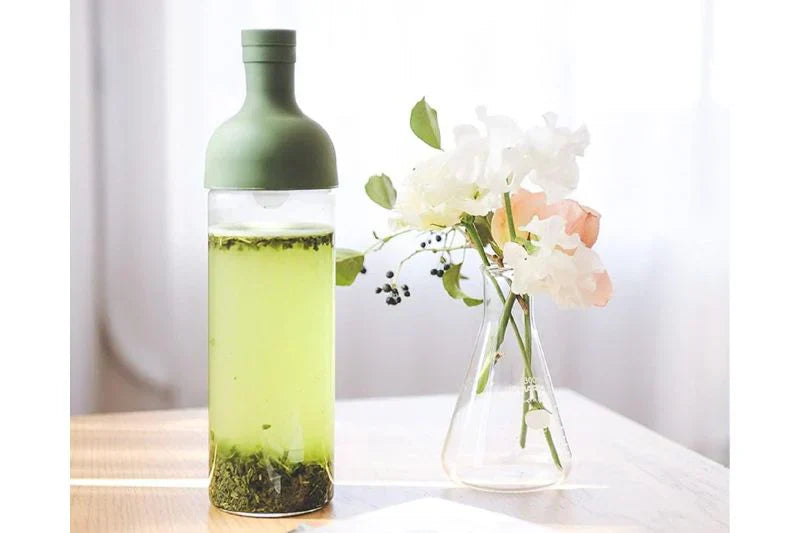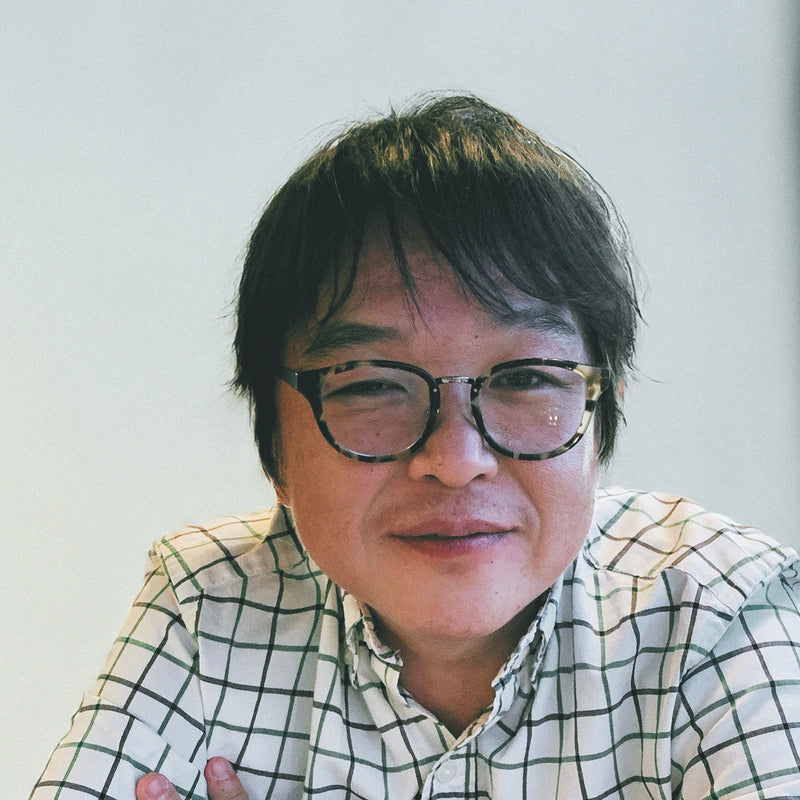How’s your Japanese green tea tasting? A perfect cup of Japanese green tea should emit flavors of umami with buttery, sweet or bittersweet, green, floral, and grassy notes. If it’s not, then look to your water as the source of the trouble. Other than your fine Japanese green tea, water will be the most essential detail to a delicious brew.
A Short Video First
During the Virtual International Tea Festival, I was asked about water, so we recorded a video answering the question. It is a short summary of what I explain in this article below that you may be interested in watching first.
Click to Subscribe to my YouTube Channel
Water Quality for Brewing Tea Has Four Essential Components to Consider
Just because water is drinkable doesn’t necessarily mean it is optimal water for brewing a pot of quality Japanese green tea. If you want the highest quality flavor from your green tea, you want to use water that will enhance the tea’s aromas, clarity, and flavors.
For the scientists out there, you probably do your own water quality testing. Those elements are:
- Water hardness or softness
- Water pH
- Water Purity
- Water Temperature
Let me first explain these, and then I will provide you with the specifics of how you can apply them to your tea. If you are not interested in the background, scroll down to the "Consider What Type of Water You Will Use to Brew Green Tea" section below!
Water Hardness or Softness
Does your region have hard water or soft water? Depending on where you live, your water from the tap could be hard or soft. In a nutshell, hard water means that it has more mineral particles in it, and soft water means there are fewer.
[A little trivia: Tokyo’s water is harder water; therefore, Tokyo often uses bonito (katsuo) for dashi, whereas Osaka's or Kyoto’s water is soft water, so it goes well with seaweed (konbu)].
Here is the hard water ranking in Japan by prefecture in 2021.
(Harder water at the top and softer water at the bottom)
Okinawa has the hardest water, and Aichi has the softest in Japan.
- Okinawa
- Chiba
- Saitama
- Kumamoto
- Ibaragi
- Tokyo
- Kanagawa
- Fukuoka
- Ehime
- Gunma
- Yamanashi
- Wakayama
- Shizuoka
- Ooita
- Tochigi
- Nara
- Kagoshima
- Hyokgo
- Tokushima
- Nagano
- Kagawa
- Okayama
- Shiga
- Mie
- Saga
- Osaka
- Ishikawa
- Kouchi
- Aomori
- Kyoto
- Iwate
- Tottori
- Yamaguchi
- Miyazaki
- Nagasaki
- Fukui
- Gifu
- Fukushima
- Hokkaido
- Niigata
- Toyama
- Akita
- Hiroshima
- Miyagi
- Shimane
- Yamagata
- Aichi
So, for tea, should you be using soft or hard water? The answer is: soft water, and here is why.

Hard water can wreak havoc on green tea by making it taste flat. With extremely hard water, the tea leaves cannot infuse properly. Optimally, you want your water's quality hardness to be 1 to 4 grains.
Hard water can also make tea cloudy. This is especially true for iced and cold-brewed green tea, which has become very popular with on-the-go lifestyles. Iced green tea will tend to become cloudy when your water hardness goes above 7 grains.
I’m fortunate to live in the Pacific Northwest, which has softer water. If you are in an area where your water is hard, you could use bottled water, which is soft water. Evian is famous for its soft, quality water.

Water pH
Water is considered neutral if it measures 7 on the pH litmus test. Over 7 water leans alkaline, and below 7 water leans acidic. Brewing tea will naturally cause the water to become more acidic, such that a neutral pH could become more like 4.5 to 6 pH when brewed.
Some tea connoisseurs believe tea is best when the brewing water is more acidic. However, the International Tea Masters Association (ITMA) recommends brewing your tea with more alkaline water, between 7.8 and 8.8 pH. Not only does slightly alkaline water create better tea, but some studies have suggested that alkaline water will maintain higher levels of antioxidant catechins and gallic acid in your brewed green tea.
Curious how you can measure your pH level? Well, there is Amazon for that. Here is a pH tester if you are interested in one. Click here for the PH Tester.

Water Purity
One more scientific point Optimally, you want the total dissolved solids (TDS) to be between 50 and 150 ppm (parts per million). These are your salts and solid mineral particles, often found in both natural, well, and municipal waters.
According to the World Health Organization (WHO), water that contains a TDS of 1000 ppm is considered safe for consumption. Wow! That means you’ve got to do a bit of filtering to get your TDS down to optimal tea brewing levels of 50 to 150 ppm.
A conventional consumer water filter is good enough to filter down these particles, so please always use filtered water for your tea.
* Less than 50 ppm is considered a health risk, as it can draw essential minerals from the body’s cells.
Water Temperature
And then comes the water temperature. During harvesting and processing, the Japanese green tea leaves are dried. When tea is brewed, the leaves are immersed in hot or boiling water. The heated water is what extracts the compounds of the tea leaf, such as aroma, flavor, amino acids, and tannins, that give the tea its unique essence.
However, each type of tea requires a specific water temperature to maximize and properly release the compound essence contained within each leaf. So, water temperature is very important in brewing Japanese green tea, or any tea, for that matter. Further on, I’ll give you the traditional way to reach maximum water temperature to brew Japanese green tea through the Yuzamashi technique.

Consider What Type of Water You Will Use to Brew Green Tea
Based on the above facts, I have listed the best guideline for choosing your water for Japanese green tea.
Soft Water
Soft water is the best water for delicious green tea brewing. This is because there are fewer minerals in bottled water. As we discussed earlier, hard water contains a higher concentration of minerals. Minerals can interfere with essential components of green tea, which would break down the infusion's taste. Additionally, hard water can give your green tea a metallic taste.
If you’re lucky enough to have soft water in your area, you’re halfway there. If you can access a water softener filtration system, then use it.
Bottled Water
If you have hard water or lack a filtration system to screen out mineral particles, then bottled water can be used. When using bottled water, never use mineral water (either sparkling or plain).

Distilled/Purified Water
Distilled or purified water is water that has been emptied of all minerals and contaminants. Purified water is made by boiling water into steam. The pure steam is processed back through cooling tubes and condensed back into water. All bacteria, organisms, minerals, chemicals, contaminants, and heavy metals have been left behind.
Removing all minerals from the water makes it very soft and virtually 0 ppm. Extremely soft water with no or low levels of minerals will brew a flat green tea. So, distilled or purified water is not recommended.
Filtered Tap Water
If you don’t use natural soft water or bottled water, then filtered tap water will be your next best option for brewing a good cup of green tea. Use a good filtering system and boil the water. I recommend the Yuzamashi technique when boiling the water.
The Yuzamashi Technique for Proper Water Temperature
Yuzamashi, which literally means "cooled down water", was long ago developed in Japan to bring boiled water to the proper temperature for brewing green tea, sencha, and matcha.
Boiling water has been the historical method to remove all water contaminants prior to tea brewing, including salts, dangerous organisms, and odors. However, only black tea will steep properly in boiling water. So, the Yuzamashi was created to cool water to the optimal temperature for brewing Japanese green tea.
-
Bring water to a steady boil at 212°F (100°C).
-
Boil water for 4-5 minutes.
-
Pour water into Yuzamashi and allow it to cool to 175°F to 185°F (80°C to 85°C).
-
Pour cooled water into the Kyusu teapot over the green tea leaves and steep.
-
Enjoy your delicious Japanese green tea!

Proper Temperatures for Teas Vary
Finally, if your green tea is still not providing the umami flavor you’ve come to know, then review your water temperature and brewing times, which can result in your green tea tasting bitter or flat. Here are the general temperature and steeping instructions for green teas and other tea varieties to consider.
I have provided a list of all other types of Japanese green tea here, with specific temperatures.
Please note that your tea source may have a specific requirement about temperature or timing, so be sure to follow their instructions if they provide them (most quality tea shops will give you very specific requirements).
Never again let the wrong water quality and temperature stop you from brewing the tastiest possible Japanese green tea. Until next time, enjoy!
• Disclosure: I only recommend products I would use myself, and all opinions expressed here are my
own. This post may contain affiliate links that I may earn a small commission at no additional cost to you.
The commission also supports us in producing better content when you buy through our site links.
Thanks for your support.
- Kei and Team at Japanese Green Tea Co.
Get Free Bonus Books

Sign up for free to the Green Tea Club to get advice and exclusive articles about how to choose Japanese Tea, and tips, tricks, and recipes for enjoying Japanese tea.
About the author
Kei Nishida
Author, CEO Dream of Japan
Certification: PMP, BS in Computer Science
Education: Western Washington University
Kei Nishida is a passionate Japanese green tea connoisseur, writer, and the founder and CEO of Japanese Green Tea Co., a Dream of Japan Company.
Driven by a deep desire to share the rich flavors of his homeland, he established the only company that sources premium tea grown in nutrient-rich sugarcane soil—earning multiple Global Tea Champion awards.
Expanding his mission of introducing Japan’s finest to the world, Kei pioneered the launch of the first-ever Sumiyaki charcoal-roasted coffee through Japanese Coffee Co. He also brought the artistry of traditional Japanese craftsmanship to the global market by making katana-style handmade knives—crafted by a renowned katana maker—available outside Japan for the first time through Japanese Knife Co.
Kei’s journey continues as he uncovers and shares Japan’s hidden treasures with the world.
Learn more about Kei






